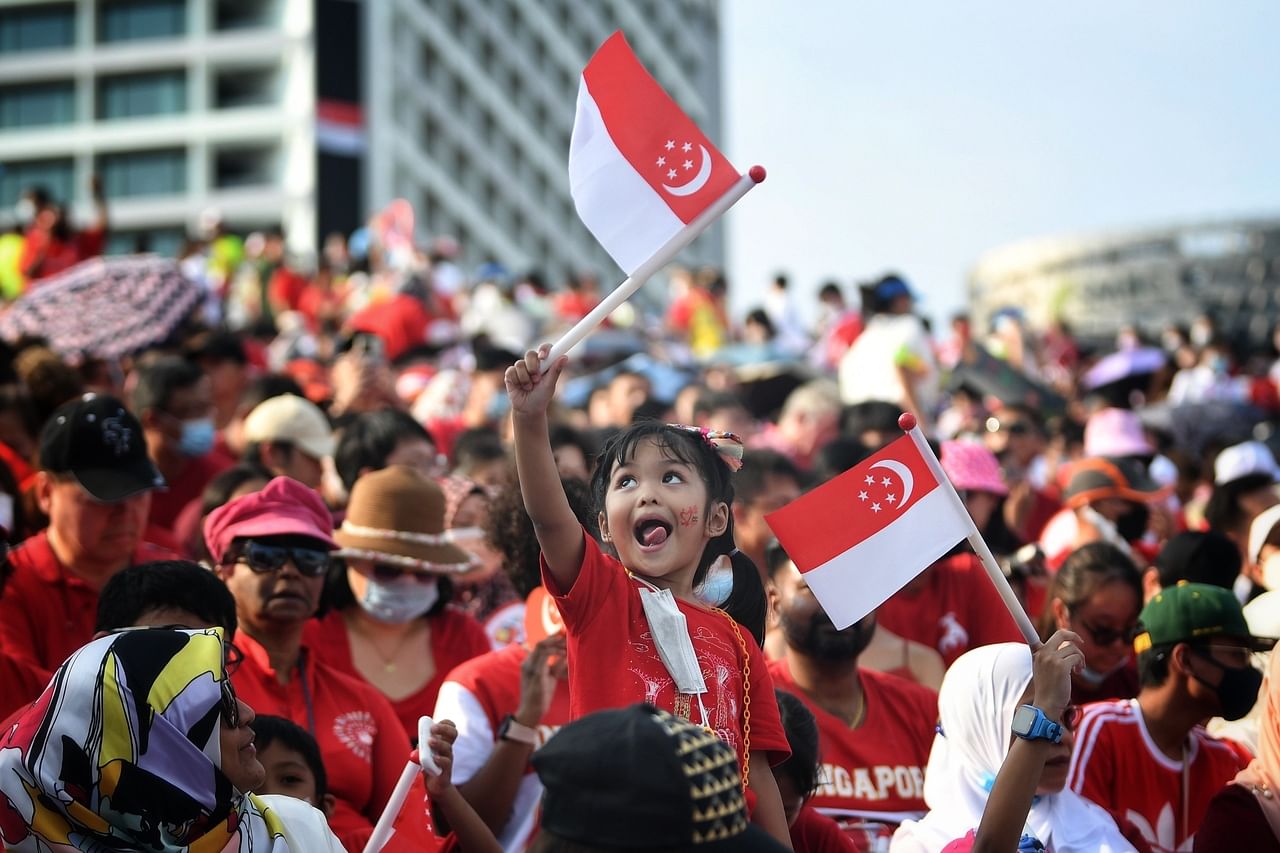SINGAPORE - The national pledge, national flower Vanda Miss Joaquim, lion head and public seal will be formally recognised as national symbols alongside the state flag, state crest and national anthem, after Parliament passed changes to the law on Tuesday.
The changes provide for more flexibility in how symbols such as the flag can be used, while raising penalties for abuse.
Those who misuse these seven symbols, or presidential symbols which comprise the presidential standard, crest and seal, can face a fine of up to $30,000 or a jail term of up to six months, or both penalties.
However, penalties for individual offences will be calibrated in regulations under the National Symbols Act, Minister of State for Culture, Community and Youth Low Yen Ling told Parliament.
More egregious offences, such as the burning or desecration of the flag, would attract higher penalties, she added.
The ministry also intends to make provisions for a stop order to be issued against disrespectful use of the national symbols.
"Failure to comply with the stop order will constitute an offence," she said. "The use of stop orders will reduce uncertainty about what constitutes an offence. This will also help clearly address cases of misuse."
The changes come after public consultations over two years on the new law, which will replace the Singapore Arms and Flag and National Anthem Act that was introduced in 1959, the year Singapore attained self-government.
"Today, Singaporeans wish to express their love for Singapore in many creative ways," said Ms Low during the debate.
Many interest groups like cycling clubs want to have the flag on their cycling jerseys. During the National Day period, it is common to see the flag mounted on the side windows of motor vehicles, and temporary flag tattoos are popular, Ms Low noted.
"Technology has also created new uses for the image of the flag," she added, noting that these can be easily manipulated and transmitted.
Ms Low said the new regulations would enable the authorities to respond more nimbly to legitimate requests to use the symbols under certain conditions, while protecting them from inappropriate use.
"We envisage that the new regulations could take a more permissive stance to allow greater artistic and creative use of an image of the Singapore flag, and to permit the use of images of the national flag on attire outside the National Day period without requiring approval, provided that such use is non-commercial and respectful," she said.
Six MPs spoke during the debate.
Workers' Party MP Leon Perera (Aljunied GRC) said the national symbols are a unifying force, regardless of political affiliation. But in conversations with Singaporeans, he has come across the view that their display is associated with support for the ruling party or the establishment, although this is less common today.
"I have also encountered the view in some quarters that if one is a Singaporean who disagrees intensely with some aspects of government policy, or the design of political institutions, one therefore will find the symbols and institutions of this nation alien and unrepresentative," he added.
He urged for these people to not be condemned, adding: "It is the task of all of us who care about our country and value our democracy to win over such people, to persuade such people to identify with our national symbols."
Mr Darryl David (Ang Mo Kio GRC) proposed the Government look into abolishing the fixed period of when the national flag can be flown. This is currently allowed during the National Day period, from July 1 to Sept 30.
Ms Low said a consistent concern raised during consultations was that overliberalising the symbols' use would diminish their stature and lead to more incidents of misuse.
"We have therefore taken a calibrated approach towards liberalising the use of the national symbols, by trying to lower the barriers to the most common uses, whilst putting in checks and balances to safeguard and protect (their) dignity and stature," she said.

Other MPs who spoke on the Bill - Mr Louis Ng (Nee Soon GRC), Mr Yip Hon Weng (Yio Chu Kang), Ms Joan Pereira (Tanjong Pagar GRC), and Nominated MP Mark Chay - sought greater clarity on the approval process of using national symbols and what constitutes a misuse.
Mr David cited examples such as remixing the national anthem, using the pledge in a performance, or getting a permanent tattoo of the lion head.
Ms Low said that in many cases, the context, nature of use, and intent have to be carefully considered to determine if a symbol is used disrespectfully or inappropriately.
The ministry plans to develop more specific guidelines, she added.
For example, any use of the flag's image should avoid areas where the attire or decoration would be easily soiled or stepped upon. In the case of the anthem, guidelines would include using the complete official lyrics and music when rearranging it, and ensuring the anthem is not incorporated into any other medley or composition.
Ms Low said these guidelines will be easily accessible and understood, especially where no prior approvals are needed. They will be published once the regulations are enacted next year.
The ministry will also focus on raising public awareness of the symbols and how they can be used.
"We aim to strike a good balance between giving Singaporeans the latitude to use the national symbols creatively and ensuring due respect for them," she said.

